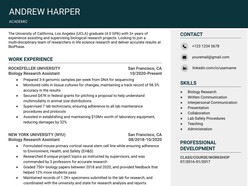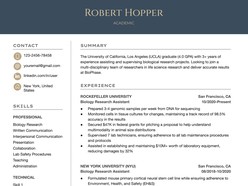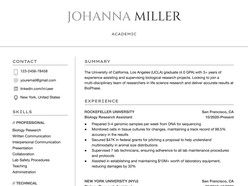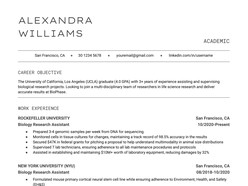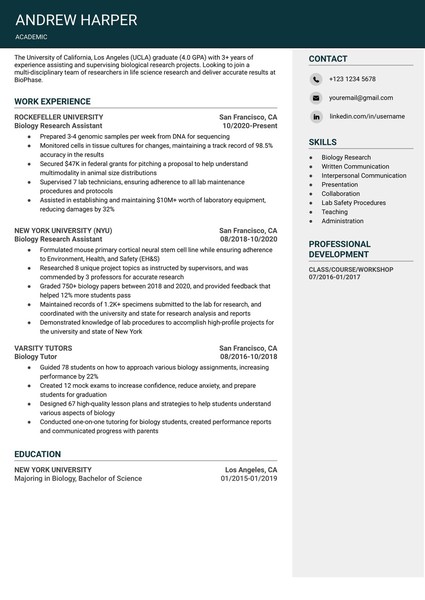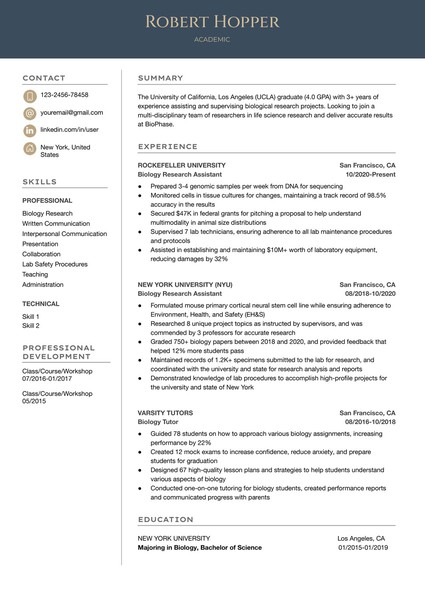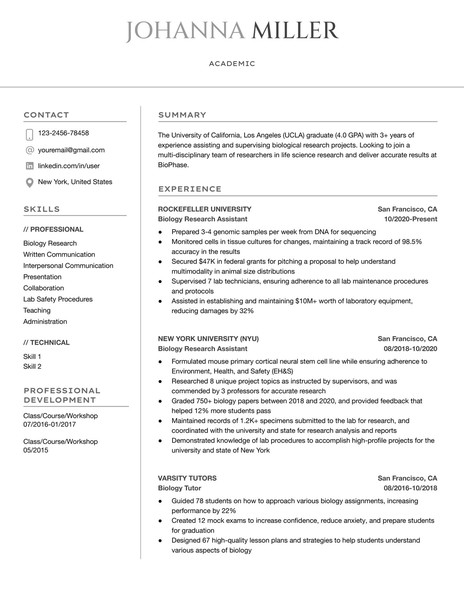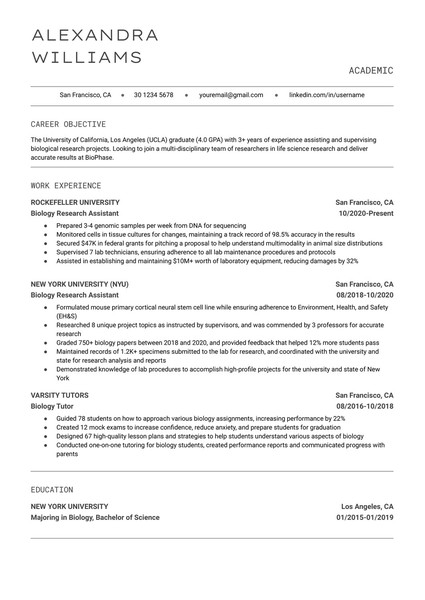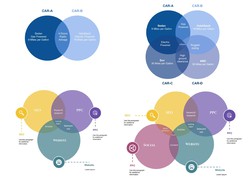How to Download and Use the Templates
Follow these steps to access and customize a Google Docs template efficiently:
- Browse Available Templates
Review the curated collection and identify a format that aligns with your event style and scheduling needs. - View Template Details
Select a template to open its dedicated detail page, where layout structure and key features are outlined. - Download the Template
Click the Download Template button to open the document directly in Google Docs. - Start Editing in Google Docs
In the opened document, select Use Template (top-right corner) to generate an editable copy. - Sign In to Google
Make sure you are signed into a Google account — this is required to save, personalize, and begin editing the template.
Once saved, the template becomes a fully customizable document — ready for editing, printing, or digital sharing with minimal setup.
How to Create an Academic Resume in Google Docs for Research, Faculty, or Graduate Roles
An academic resume (sometimes called a CV) is fundamentally different from a standard resume. It prioritizes depth over brevity, and it must present your academic journey in a clear, structured, and accessible way.
Whether you're applying for a teaching position, PhD program, postdoc, or grant, this guide walks through how to build a comprehensive academic resume in Google Docs — including the sections that matter, how to format citations, and where to highlight your impact.
1. Use a Clear, Hierarchical Structure
Why it matters: Academic reviewers expect a specific flow. A misaligned order may give the impression of inexperience or disorganization.
Suggested order:
Contact Information
Education (most recent first)
Research Interests or Areas of Focus
Teaching Experience
Research Experience
Publications & Presentations
Awards, Honors, and Fellowships
Professional Memberships
Additional Skills (languages, software, methodologies)
In Google Docs, use Heading styles (H1, H2, H3) to structure sections. It also enables easy navigation with the document outline tool.
2. Be Precise With Publications and Presentations
Why it matters: Your academic contributions are central to hiring, tenure, and grants. Poor formatting can obscure them.
Formatting tips:
Follow a consistent citation style (APA, MLA, or Chicago, depending on field)
Separate peer-reviewed publications from conference abstracts or posters
Group by type (journal articles, book chapters, proceedings)
Include DOI links or publication status if in review or forthcoming
Google Docs allows for footnotes, hanging indents, and linking to published work — all critical for accurate citation.
3. Detail Teaching Experience With Context
Why it matters: Simply listing course names isn’t enough — committees want evidence of instructional range and engagement.
How to write it:
Include role (e.g., Instructor of Record, Teaching Assistant)
Mention course title, level (undergrad/graduate), and term
Add context: class size, delivery method (in-person, hybrid), student feedback if available
Example:
Instructor of Record – “Intro to Linguistics” (Fall 2023, 80 students, hybrid). Developed curriculum and led weekly seminars; received 4.8/5 average student rating.
4. Show Research With Defined Scope and Contributions
Why it matters: Committees evaluate not just that you conducted research, but how you contributed and what methodologies you applied.
Include:
Title or theme of project
Research advisor or lab affiliation
Funding source (if applicable)
Methods used (quantitative, qualitative, archival, experimental)
Summary of outcomes (e.g., “Published in Journal of Neuroscience,” “Used in local curriculum policy proposal”)
Use bullet points for clarity and avoid dense paragraphs. Google Docs makes alignment and list formatting simple — essential for multi-point entries.
5. Add Awards, Fellowships, and Professional Affiliations
Why it matters: Academic credentials often come with external validation. These details distinguish candidates in competitive environments.
Include:
Grants (title, institution, year, amount if significant)
Scholarships or travel awards
Fellowships (teaching, research, clinical)
Memberships in scholarly associations (e.g., MLA, APA, IEEE)
These should follow publication sections and precede skills. Use clear formatting to differentiate year, awarding body, and award name.
Why Use Google Docs for Academic Resumes?
Style Consistency — Maintain citation and layout clarity without formatting loss
Live Editing — Share with mentors or committees for collaborative review
Customizable Templates — Build sections once and adapt for different institutions or fellowship applications
Cloud-Safe — Access from campus labs, libraries, or research travel
Final Thought: Present Your Academic Path With Clarity
An academic resume is more than a document — it’s a reflection of your intellectual contributions. Whether applying for a tenure-track role, graduate fellowship, or grant, it must be formatted to meet scholarly expectations while highlighting your expertise.
Google Docs provides a flexible yet structured environment to document every stage of your academic development, with professional clarity.
